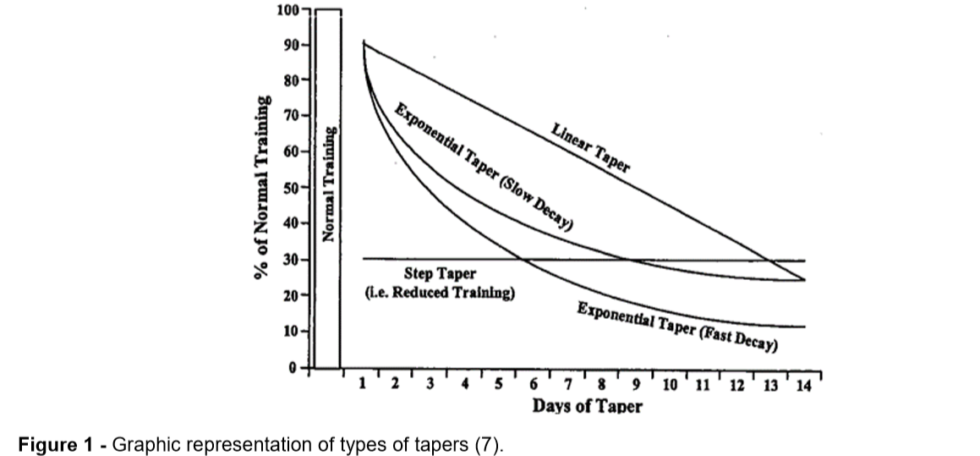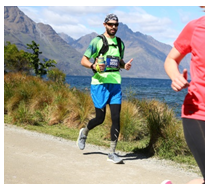What is it?
Tapering is a term used in the sports science and training scene and with runners is used in the lead up to a specific target event or race they have in their training calendar. It involves a portion of the training program that has reduced volume and increased intensity in an attempt to manage the appropriate training load, in order to have peak performance at the specific moment in time on race day.
Types of Tapers
- Linear – gradual smooth decrease in overall training load

- Exponential slow decay – slower decrease in volume
- Fast decay – quick reduction in load that then slows with time
- Step – large initial drop that then plateaus for remainder of program
Components of a Taper
- Duration
- 2 weeks for a 3-5km and 3 weeks for 10km upwards
- However the level of fatigue going into the taper is the key determinant of the duration
- Volume
- 40-60% reduction in volume over 2 weeks is a good starting point
- Intensity
- Should remain the same or even slightly higher with focus being on recovery
- The most intense session should be 5-14 days prior to 5-10km race and up to 30 days prior to a marathon
- Frequency
- Reduce frequency by no less than 80% for elites and by no less than 50% for the less trained
How does tapering effect performance?
- Improves oxygen carrying capacity

- Improved training recovery
- Improved glycogen stores and muscle oxygen capacity (mitochondria)
- Improved muscle strength and power
- Reduced muscle and overall body stress (reduced cortisol produced)
- Improved psychological and energy states
- Reduced rating of perceived exertion
Research suggest that improvements in performance are in the vicinity of between 2-5% and the recommendations for how much to taper depends on the volume, intensity, frequency and duration of your current training program.
Practical Applications
The following guidelines are recommended when considering a taper for long distance athletes.
- Use a period of between 1 and 4 weeks
- Shorter periods (1-2 weeks) appear to be better for 3km-5km.
- Longer periods (3-4 weeks) appear to be better for 10km and above
- Reduce normal volume of running 40-80%
- Maintain or increase intensity of efforts. (Example – increasing the speed of running, reducing the recovery between efforts)
- For 5km and 10km perform the most intense session 5-10 days before competition
- For the Marathon perform the most intense session up to 30 days
- Reduce frequency of running sessions by 20-50%
Things to monitor and learn from in regards to your tapering (you will need some baseline measures to compare to)
- Heart rate – resting, during and between efforts
- Running form, cadence, energy levels, sleep quality, weight, mood and appetite – just to mention a few
It is very important to use recommendations and things that you read as a guide and to get to know your body and its training response. I hope that this gives you a little “food for thought” and allows you to tailor your training program to best suit your own personal needs.
Recap – General Guide to tapering for distance runners (5km-Marathon Distance)
- Duration – 1-4 weeks taper
- Volume – reduce by 40-80%
- Frequency – 20-50%
- 4Last difficult session – 5-10 days prior to race (5-10km) and up to 30 days (Marathon)
Until next time,
Joel
Physiotherapist & Exercise Scientist
Certified Professional with “The Running Clinic”
